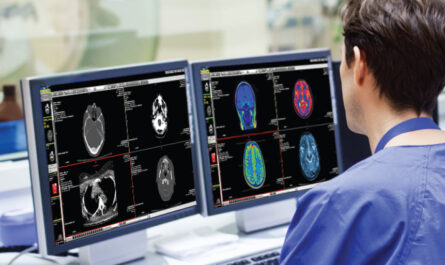The healthcare industry faces enormous challenges in delivering quality care to patients in a cost-effective manner. Rising costs, stringent regulations, shortage of resources and mounting administrative workload are exerting immense pressure on healthcare organizations. In this digital era, healthcare organizations are increasingly adopting clinical and financial Information Technology solutions to automate processes and gain operational efficiencies. One such trend gaining prominence is the implementation of Enterprise Resource Planning (ERP) systems in the healthcare sector.
What is Healthcare ERP?
An ERP system is a packaged software that allows an organization to use a system of integrated applications to manage core business functions such as inventory management, manufacturing, distribution, accounting, human resources and customer relationships. A healthcare ERP system does the same by integrating clinical, administrative and financial applications across departments within a hospital or between various facilities of a health system. Some key features of a healthcare ERP include:
– Integrated clinical and administrative modules for functions like admissions, discharge, transfer, patient scheduling, billing, inventory and procurement.
– Centralized patient database for consolidated viewing of patient information across departments.
– Automated workflows for streamlining processes like pre-registration, pre-certification and payments.
– Analytical reporting and business intelligence capabilities.
– Interfaces for integrating with downstream clinical, billing and lab systems.
– Built-in regulatory and compliance features.
Benefits of Healthcare ERP
Implementation of Healthcare ERP systems in healthcare brings about many operational, financial and clinical benefits:
Improved Patient Care
– Automated clinical workflows facilitate faster patient care delivery.
– Consolidated patient health records enable coordinated care across departments.
– Error-free billing lessens patient payment issues and follow-ups.
Enhanced Revenue Cycle Management
– Integrated charging and coding leads to complete and accurate billing.
– Automated claim submissions and follow-ups speed up reimbursements.
– Dashboards help monitor KPIs like denials, cash flow and aging reports.
Cost Reduction and Optimization of Resources
– Elimination of redundant data entry saves costs.
– Inventory management optimizes supplies purchasing and usage.
– Mobile access to systems improves staff productivity and responsiveness.
Regulatory Compliance
– Built-in features ensure adherence to compliances like ICD-10, HL7, HIPAA etc.
– Automatic audit trails simplify audits and prove compliance.
Analytics and Business Intelligence
– Dashboards and reports provide real-time insights into KPIs.
– Predictive analytics helps identify trends, revenue leakage areas.
– Supports effective resource planning, policy-making and decision-making.
*Note:
1. Source: Coherent Market Insights, Public sources, Desk research
2. We have leveraged AI tools to mine information and compile it




